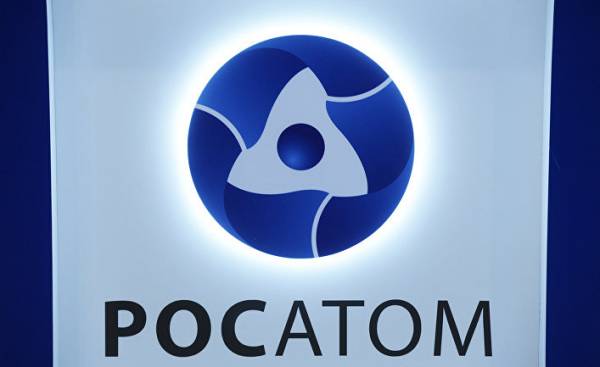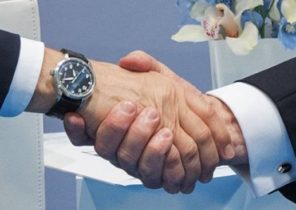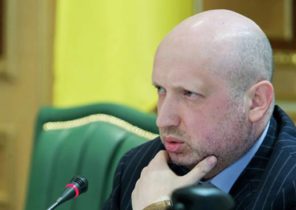
At the end of last year, the National Assembly of Vietnam voted to stop all construction projects of nuclear power plants (NPPs) in the country. Russian NPP “Ninh Thuan 1” was to become the new driving force in the cooperation between the two countries, the first nuclear power plant “Rosatom” in South-East Asia and a symbol of a new stage of development of the Vietnamese energy sector. But it happened otherwise. The story of a Russian nuclear power plant in Vietnam began long, and ended very quickly.
Energy hunger
Vietnam’s nuclear program began in 1958, when South Vietnam became one of the first countries that ordered American reactor Triga Mark II of the program “atoms for peace”. Earned research reactor in Dalat in 1963, but due to the outbreak of the second Indochina war the Americans stopped him, and then evacuated for security reasons.
United under Communist rule of Vietnam shortly after the rift with China and the border war was only one strategic ally from among the members of the nuclear club — the Soviet Union. Soviet scientists and engineers do not have to complicate their work and in 1980 gathered in new Dalat research reactor on the site of the American, putting a Soviet reactor IVV-9 in the building of the American Triga and leaving some elements of the design. A new object used for the training of Vietnamese physicists and engineers and also for production of medical isotopes.
Around the same time — the early 1980s — the Vietnamese thought of the prospects of nuclear power and spent on this subject two studies. It is known that in the third such study in 1995 it was proposed to start generating electricity at nuclear power plants from 2015, when the needs of Vietnam’s electricity reached 100 billion kWh per year.
Then Vietnamese economists could not assume that the real energy demand will be two times higher. Market reforms “updates”, which began in 1986, and opening the country to foreign capital quickly yielded results — Viet Nam has embarked on the familiar rails of the Asian countries export-led growth. From 2000 to 2008 the growth rate did not fall below 6.8%, and with them the growth of energy consumption, which stood in the 2000s, about 15% per year.
On this wave of growth adding atom in the structure of energy consumption seemed a logical step to be able to show the technological focus of the Vietnamese economy, to give a signal to foreign investors that the growth will be long and sustainable. In 2006, the Vietnamese government announced that in 2020, it should be running two reactors with a capacity of 2 GW in the South of Ninh Thuan province, and then another two in the neighboring province and three more by 2030. According to the optimistic scenario in 2020 in Vietnam could operate nuclear power plants at eight sites in five provinces of the country. By 2050, nuclear energy accounted for 20-30% of energy consumption.
It was small — it was necessary to choose a partner for the first two reactors. Interest was shown by the us-Japanese Westinghouse and French EdF, South Korea’s Kepco and China Guangdong Nuclear Power Group (CGNPG). In 2007, there were rumors that the Vietnamese made a choice in favor of the Japanese Kyushu Electric Power Company, which will supply the reactors Westinghouse, Mitsubishi collected. The project cost was then estimated at $ 4 billion.
However, the happy owner of the rights to build the first NPP in Vietnam was the Russian Rosatom and its subsidiary Atomstroyexport. Vietnamese officials referred to the fact that Russia offers the most secure technology, and a high level of political trust between the two countries. That policy has played an important role here, no doubt. For Russian-Vietnamese relations, it was a good time — was in the course of a narrative about the restoration of Russia’s position in the world, and Vietnam was successfully put on display such a “return,” Recalling the rich history of Union relations when the Soviet ships plied the Pacific ocean, relaxing in the famous Cam Ranh Bay. In 2009 Vietnam signed a deal for purchase of six diesel-electric submarines of project 06361, and the construction of nuclear power plants looked spectacular addition to this kind of strategic cooperation, only in non-military area.
In October 2010 an intergovernmental agreement drew a line under the agreements. The Russian company had in 2014 to start the construction of NPP “Ninh Thuan 1” with two VVER-1200 and connect them to the grid in 2020. The transaction amount was estimated at $8 billion, 85% of which would be covered by the Russian loan. In 2010, a similar agreement was signed with the Japanese consortium on nuclear power plant “Ninh Thuan-2” with terms of commissioning in 2024-2025.
The Russian project was extremely important from branding point of view. “Ninh Thuan-1” became not only the first nuclear power plant in Vietnam, but also the first working station in the whole of Southeast Asia, as well as the first nuclear power plant “Rosatom” in the region. In the export strategy, the Vietnamese project has occupied an important place in the construction of Tianwan NPP in China, the foreign supplier restricted the construction of the reactor and piping, and in Vietnam, Russia has received a complete package of services for the construction and maintenance of the station. The head of “Rosatom” Sergei Kiriyenko said then that he intended to use the “Vietnamese nuclear program as the platform as a fulcrum for the development of peaceful uses of atomic energy and nuclear technology in the Asia-Pacific region.”
Long harnessed
Although by the end of 2010 the global financial crisis has struck and the Vietnamese economy has felt its negative effects (and soon came the crisis of the public sector), the project NPP predicted a great future. But less than six months after the signing of the intergovernmental agreement, in March 2011, accident at the Japanese NPP “Fukushima” — the biggest shock to nuclear energy in recent decades. In the “Rosatom” estimated that only for the first year was suspended 62 plants around the world and 10% reduction in the number of NPP projects.
Public opinion, especially in Asia, for the first time after the incident with the voltage applied to the nuclear industry. Vietnam was no exception, so the Russian side did a lot to convince partners that the Russian technology is safe. Reactors “Ninh Thuan-1” was supposed to belong to generation III+, that is, to have a modern passive safety systems.
Despite some silence on this project for the last years, he remained the center of attention of the Russian-Vietnamese cooperation — nuclear power plants invariably appeared in joint statements. In Obninsk branch of Moscow engineering physics Institute train future Vietnamese experts, they are also trained in Volgodonsk, where is located the Rostov NPP and the plant Atommash, only about four hundred people. Vietnamese authorities prepared resettlement of people who lived in the area allocated for the plant.
As PR support of the project “Rosatom” was established in Hanoi nuclear energy Information center, designed “to inform and educate the public” about its benefits. The company held regular public events, participated in exhibitions and even landed in Phan rang Alley of the peaceful atom. All this was intended to set in favor of the company and of the nuclear project, public opinion, agitated by the disaster in Japan. Moreover, “Rosatom” it was an unpleasant experience in India, where the people’s movement against nuclear energy organized protests against the construction of NPP “Kudankulam”.
The first clouds appeared on the horizon in 2014, when the NPP was to begin to fill the first cubic meters of concrete. In January, the Vietnamese government said that the construction was delayed for four years due to “ongoing negotiations on financial and technical issues.” Earlier it became known that IAEA has called for more thorough preparation of the project, and in 2015, the Vietnam atomic energy Agency has already called in 2019 as the starting date of construction.
In November 2015, the Committee on science, technology and environment of the Vietnamese Parliament (National Assembly) has postponed the date of construction for 2022 and be commissioned in 2028. Around the same time released an article by member of the Central Committee of the ruling Communist party of Vietnam, Deputy head of Central Committee propaganda vu Ngoc Hoang, who talked in detail about the shortcomings of the Vietnamese nuclear program, remembering Chernobyl, listed the environmental risks and indicated the high cost of the project.
If these signs were not enough, in the beginning of 2016, it added a very unfortunate incident. A Taiwanese steel company, Formosa Ha Tinh Steel in Central Vietnam threw in the sea toxic waste, which led to mass death of fish. Came under attack more than 200 thousand people in at least four provinces — families of fishermen and producers of salt, which banned the use of poisoned marine resources. The government long refused to name the culprits in major cities held protests, which do not cease until now, especially the Catholic villages who have not got compensation. All this has led to an unprecedented interest in the environmental topic in the Vietnamese information space — any news have become more important, especially when it was a question of the enterprises with foreign participation.
By the beginning of the autumn of 2016 rumors that NPP projects, both Russian and Japanese, you can freeze or cancel. And here on 10 November, the head of the Vietnamese energy Corporation stated that the updated energy plan of the country till 2030 no project of nuclear energy and the budget therein. 22 November the National Assembly of Vietnam voted in support of the proposal of the government to stop the development of nuclear power projects in the country.
The main reason for the abolition of nuclear power plant projects — changing economic environment. In 2009, the rising demand of Vietnam’s electricity was projected at 17-20% per year, and last year for the period 2016-2020 forecast was already at 11%; for the period of 2021-2030 years — 7-8%. Besides the cost of projects has increased almost twice — from $ 9 billion to 18 billion, and according to some Vietnamese media up to 27 billion. Even more revealing is the increase in the cost of the electricity from nuclear power plants with 4 to 4.5 cents per kilowatt-hour to more than 8 cents per kilowatt-hour. This increase in costs looked very bad on the background of falling prices for oil and coal, as well as the threat of exceeding the government’s debt ceiling of 65% of GDP.
Vietnamese officials have done everything possible to show that the cancellation of the project, nothing personal, and that doubts about the quality of Russian (and Japanese) sentences they have. A week before the vote in the national Assembly Deputy Prime Minister Trinh Dinh dung at a time and without fanfare, met with Russian and Japanese counterparts, and immediately after the formal abolition “of nuclear power plant projects in Ninh Thuan province”, by the representative of the government and head office Mai Tien dung made a long soothing statement, which expressed confidence in the Russian and Japanese technologies and promised not to slow down the overall pace of cooperation.
But one thing — the real level of security, and the other mass perception. Although it is in Vietnam, Russia has the highest support rating according to the version of the Pew Global Attitudes, negligence in matters of environmental protection can be costly to the government, as it is one of the topics that concern all strata of Vietnamese society by bringing together nationalists, green, Catholic and urban middle class.
Economic risks, and environmental activism, you can add another suspect. Active anti-corruption campaign, led by the CPV Secretary General Nguyen Phu trong and uses including as a tool to “purify” the party from the so-called interest groups, is not conducive to the implementation of major projects. As in neighboring China, such campaigns generate a bureaucratic daze, when to take the big plan is dangerous for political careers.
What now?
The calm exterior around the cancellation of the project of the NPP, of course, bad Russian hides the hurt from the lost of energy and resources. In Russia received training on nuclear specialties hundreds of Vietnamese students, 150 engineers practiced in the Rostov NPP. Of course, they will remain in demand and be able to work at other energy objects of the country, in the field of nuclear medicine and other applications of the peaceful atom (the first reactor in da lat is still running), but the feeling of loss of profits will remain.
Whatever is said, and the loss of the Vietnamese nuclear project caused damage to Russian-Vietnamese relations. Trade and the economy have always been their weak point and contrasted sharply with the lush political rhetoric and the almost mandatory annual meetings of heads of state. Only this year should be held at least two such meetings — visit of President of Vietnam Tran Dai Quang in Moscow in June and a trip of Vladimir Putin at the APEC summit in Vietnam. Partly in light of plans for the supply of equipment and services for NPP sides from one year to declare their intention to enter the volume of trade turnover to 10 billion dollars by 2020, although in 2016 it amounted to 3.8 billion, falling by 1.5% compared to the previous year.
The project of “Rosatom” could become the new flagship of the bilateral cooperation is the new, high-tech industry, and even a breakthrough for Vietnam and all of Southeast Asia. “Ninh Thuan-1” could be replaced as the most important project running from 1980-ies of the JV “Vietsovpetro”, producing oil on the Vietnamese shelf. Now the parties will have to seek new large-scale projects, although the same scale and quality to achieve will be difficult, not to mention the possibilities for access to technology.
All this is not good news for the “Rosatom” and regional strategy. In 2014, Singapore was the registered office of the company, and in the summer of 2016, the company gave a positive assessment of the prospects for Southeast Asia as a market for nuclear goods and services. The Director of the Department of international business Nikolay Drozdov said that next in line for nuclear power plants can become Indonesia and Malaysia, although even then the representative of “Rosatom” emphasized the role of public opinion in the success of such projects.
In addition to Vietnam, Russia has agreements on cooperation in peaceful atom with six other countries of the region-Malaysia, Indonesia, Thailand, Cambodia, Laos and Myanmar. However, in none of them it is not about the construction of nuclear power plants. Apparently, now the emphasis is on Indonesia, where Rosatom has developed a pilot reactor with a capacity of 10 MW, but which is also not yet clear in terms of public perception. The government will have to convince the public that it is safe to build nuclear power plants in the archipelago where earthquakes, typhoons, forest fires, and even terrorist attacks is not uncommon.
In other words, for the Russian export strategy of the NPP in Vietnam was an important link. Despite the image of “Rosatom” as a successful high-tech player on the global level and the astronomical cost of the portfolio (more than $ 100 billion), in fact, nuclear power plants are built today in only three countries — India, China, and Belarus (although the large-scale preparatory works are also in Bangladesh and Finland). In a broader sense, the actual construction of a nuclear power plant in South-East Asia could become a serious contribution to the Russian strategy in the region, which today is, in essence, boils down to the projects in the field of oil and gas, and arms exports. While the volume of trade and investment cooperation do not take up more than 2% of the total for Russia, and ASEAN countries.
The history of the abolition of the Russian NPP project in Vietnam, not on how Russia lost something or are unable to successfully execute international project in Asia. On the contrary, the Russian proposal was a high-quality, technologically advanced and relevant, but the bet is not played due to an unfortunate set of circumstances. Noticeable this loss makes rather the lack of other Russian projects of a similar level in South-East Asia.
For the Russian presence in Asia in the long term, it is important to create a critical mass of business connections on the level of the average business, however, it is in large public corporations is usually a possibility with the political support to pave the way for complex and untapped Asian markets. Unfortunately, in Vietnam, “Rosatom” has failed to become such a pioneer.







